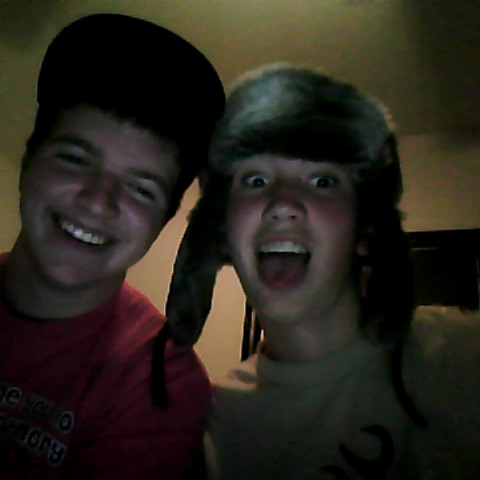Ryan T Lyle
age ~50
from Prior Lake, MN
- Also known as:
-
- Ryan Todd Lyle
- Todd T Lyle
- Ryan Thomas Lester
- Phone and address:
-
2955 Bobcat Trl NW, Prior Lake, MN 55372
6514024443
Ryan Lyle Phones & Addresses
- 2955 Bobcat Trl NW, Prior Lake, MN 55372 • 6514024443
- 7525 132Nd St, Oklahoma City, OK 73142 • 4057226513
- 7819 Joplin Ave, Tulsa, OK 74136
- Gainesville, GA
- Sugar Land, TX
- Stillwater, OK
Work
-
Position:Food Preparation and Serving Related Occupations
Us Patents
-
Adaptive Index Reference Position Qualification
view source -
US Patent:6950270, Sep 27, 2005
-
Filed:Oct 23, 2002
-
Appl. No.:10/279134
-
Inventors:Ryan T. Lyle - Oklahoma City OK, US
David C. Waugh - Oklahoma City OK, US
James W. Dulaney - Oklahoma City OK, US
Jeffrey D. Andress - Edmond OK, US -
Assignee:Seagate Technology LLC - Scotts Valley CA
-
International Classification:G11B005/596
-
US Classification:360 7804, 360 70, 360 7811
-
Abstract:Method and apparatus for performing a seek operation to move a data transducing head from an initial track to a destination track on a rotatable recording surface. A servo control circuit operates to sweep the head across the recording surface. Servo data from an intermediary track are transduced to obtain a detected angular position value for the head with respect to the recording surface. When the detected angular position value differs from a predicted angular position value for the head, the servo control circuit initiates an index qualification routine at the conclusion of the seek. The qualification routine involves transducing the servo data from the destination track to verify the accuracy of the predicted angular position value. In this way, the effects of spurious (false) index signals obtained from the servo data transduced during the seek operation are minimized, and unnecessary reinitializations of the servo control circuit are avoided.
-
Motor Torque Constant Variation Compensation
view source -
US Patent:7031100, Apr 18, 2006
-
Filed:Dec 18, 2002
-
Appl. No.:10/323130
-
Inventors:Jeffrey D. Andress - Edmond OK, US
Philip R. Woods - Oklahoma City OK, US
Ryan Todd Lyle - Oklahoma City OK, US -
Assignee:Seagate Technology LLC - Scotts Valley CA
-
International Classification:G11B 5/596
-
US Classification:360 7806
-
Abstract:Method and apparatus for compensating for a decrease in the torque constant of an actuator motor in a data storage device. An actuator supports the head adjacent a data recording surface on which a plurality of tracks are defined. A servo circuit outputs current to the actuator motor to carry out a seek to move the head from an initial track to a destination track in accordance with a velocity profile having a nominal deceleration trajectory along which the head is decelerated to reach the destination track. The servo circuit operates to adjust an initial value of gain to a second value in response to a selected parameter, and scales the nominal deceleration trajectory to a derated deceleration trajectory in relation to the second value of the gain. The derated deceleration trajectory is preferably selected in relation to the difference between the second value of gain and a predetermined threshold.
-
Closed Loop Acceleration Control For A Data Storage Device Motor
view source -
US Patent:7589484, Sep 15, 2009
-
Filed:Jun 5, 2003
-
Appl. No.:10/455134
-
Inventors:Raye Abdoulie Sosseh - Oklahoma City OK, US
James Wilford DuLaney - Edmond OK, US
Ryan Todd Lyle - Oklahoma City OK, US -
Assignee:Seagate Technology LLC - Scotts Valley CA
-
International Classification:H02P 1/00
-
US Classification:3184003, 318440, 318442, 318610, 318621
-
Abstract:Method and apparatus for accelerating a multi-phase motor having a rotatable rotor are disclosed. A first commutation state in which the rotor resides is identified, after which a Proportional, Integral and Derivative (PID) control routine is executed for closed loop control of an acceleration of the rotor from a stopped position to an intermediate velocity, after which back electromotive force (Bemf) commutation is used to control the motor. The PID control routine utilizes a loop gain value optimized through voltage feedback indicative of a response of windings of the rotor to an application of a drive current across the windings. Based on the voltage feedback a controller programmed with the PID control routine provides an updated commanded current for each successive commutation state of the motor for use by a motor driver circuitry, which drives the motor through each commutation state until attainment of the intermediate velocity.
-
Wear Reduction Of A Disc Surface Using An Adaptive Dither Process
view source -
US Patent:20030107835, Jun 12, 2003
-
Filed:Jun 27, 2002
-
Appl. No.:10/183290
-
Inventors:Matthew Duvall - Oklahoma City OK, US
James DuLaney - Oklahoma City OK, US
Ryan Lyle - Oklahoma City OK, US
Wonbo Shim - Edmond OK, US -
Assignee:Seagate Technology LLC - Scotts Valley CA
-
International Classification:G11B021/02
-
US Classification:360/075000
-
Abstract:Method and apparatus for reducing and dispersing wear to the surface of a rotatable disc in a disc drive using an adaptive dither process. The disc drive includes an actuator assembly that is secured in a parked position by a latch when not in use. The method includes determining an open latch current required to open the latch as the actuator assembly is moved from the parked position to a position over a user data storage portion of the disc. A dither current is subsequently applied to the actuator assembly to induce a reciprocating lateral displacement of the actuator assembly when the actuator assembly is secured in the parked position, wherein the maximum amplitude of the dither current is selected to be less than the open latch current.
-
Limited Current Sliding Mode Control For Low Rpm Spindle Motor Speed Regulation
view source -
US Patent:20030184249, Oct 2, 2003
-
Filed:Jun 28, 2002
-
Appl. No.:10/186966
-
Inventors:Jeffrey Heydt - Oklahoma City OK, US
Alfredo Gay Sam - Oklahoma City OK, US
James DuLaney - Oklahoma City OK, US
Ryan Lyle - Oklahoma City OK, US -
Assignee:Seagate Technology LLC - Scotts Valley CA
-
International Classification:G05B011/01
-
US Classification:318/560000
-
Abstract:Method and apparatus for controlling a motor below a threshold velocity. During a velocity control mode, the motor is accelerated to an operational velocity, receives a commanded velocity value, and switches from a first control method to a second control method below the threshold velocity. The threshold velocity is determined from limitations of control electronics that do not function well when a motor current drops below the threshold level. The sliding mode control method measures the measured motor velocity, compares the velocity to the commanded velocity, applies a current value when the measured value is less than the commanded value and applies a negligible current value when the measured value is greater than the commanded value. The threshold level is dictated by the first control method. Back electromotive force (bemf) detection circuitry is used to measure the motor current.
-
Narrow Band Dwell Monitoring
view source -
US Patent:20180336921, Nov 22, 2018
-
Filed:May 4, 2018
-
Appl. No.:15/971158
-
Inventors:- Cupertino CA, US
Brian R. Pollock - Eden Prairie MN, US
Ryan Todd Lyle - Prior Lake MN, US
Ryan Thomas Herbison - Minneapolis MN, US
Richard Arthur Herr - Eden Prairie MN, US
Paul W. Burnett - Minneapolis MN, US -
International Classification:G11B 5/265
G11B 5/725
G11B 5/455 -
Abstract:Narrow band dwell occurs when air bearings corresponding to a set of read and/or write heads within a hard disc drive remain within a fixed narrow band of one or more storage platters for an extended period of time. The air bearings displace lubricant on the storage platters and may redeposit the lubricant as droplets on the platters. The presently disclosure technology is directed to monitoring a hard disc drive for narrow band dwell, and in some implementations, implementing operations to mitigate narrow band dwell. More specifically, the presently disclosure technology may detect an overflying air-bearing slider position, apply a lubrication film displacement formula to a narrow band of the storage platter, apply a lubrication film reflow formula to one or more other narrow bands of the storage platter, and track lubrication film thickness over time in each of the narrow bands of the storage platter.
Resumes

Ryan Lyle
view sourceWork:
Inter-Pak Supply

Ryan Lyle
view source
Ryan Lyle
view source
Ryan Lyle
view source
Non-Profit Organization Management Professional
view sourceFlickr
Youtube
Googleplus

Ryan Lyle

Ryan Lyle

Ryan Lyle

Ryan Lyle

Ryan Lyle

Ryan Lyle
Work:
UNEMPLOYED
Education:
Slippery Rock University of Pennsylvania
Relationship:
In_a_relationship
About:
Ello. I'm Ryan and I refuse to use facebook.
Tagline:
Facebook sucks, amirite?
Get Report for Ryan T Lyle from Prior Lake, MN, age ~50










